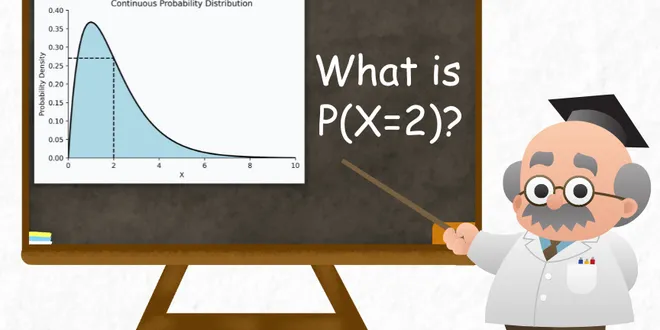Probability density function
A probability density function (PDF) is a fundamental concept in statistics and probability theory that describes the likelihood of a continuous random variable taking on a specific value. Unlike discrete random variables, where probabilities can be assigned directly, a PDF provides a density value that must be integrated over an interval to yield a probability. The area under the curve of a PDF across a range of values represents the total probability of the variable falling within that range. Common examples of PDFs include the normal distribution and the exponential distribution, each characterized by specific mathematical formulas.

Chapter 6 Probability density functions
The code for this chapter is in density.py . For information about downloading and working with this code, see Section 0.2 . 6.1 PDFs The derivative of a CDF is called a probability density function ,...
📚 Read more at Think Stats🔎 Find similar documents

Probability Mass and Density Functions
Probability mass and density functions are used to describe discrete and continuous probability distributions, respectively. This allows us to determine the probability of an observation being…
📚 Read more at Towards Data Science🔎 Find similar documents

What Is A Probability Density Function?
In the wonderful world of statistics, distributions are an absolutely vital component that sits at the center of a universe of mathematics. Distributions are used to describe data mathematically, and…...
📚 Read more at Towards Data Science🔎 Find similar documents

Chapter 3 Probability mass functions
The code for this chapter is in probability.py . For information about downloading and working with this code, see Section 0.2 . 3.1 Pmfs Another way to represent a distribution is a probability mass ...
📚 Read more at Think Stats🔎 Find similar documents

What Is A Cumulative Distribution Function?
Back in May, I took a look at a distribution function that belongs to most statistical distributions called the Probability Density Function, or PDF. The PDF is a very important part of statistical…
📚 Read more at Towards Data Science🔎 Find similar documents

A Gentle Introduction to Probability Density Estimation
Last Updated on July 24, 2020 Probability density is the relationship between observations and their probability. Some outcomes of a random variable will have low probability density and other outcome...
📚 Read more at Machine Learning Mastery🔎 Find similar documents

Statistical Distributions
A probability distribution is a mathematical function that provides the probabilities of the occurrence of various possible outcomes in an experiment. Probability distributions are used to define…
📚 Read more at Towards Data Science🔎 Find similar documents

Part 03: Describing Random Outcomes: PMF, CDF, and PDF
In the previous article, we introduced the concept of a random experiment using the example of student marks in a class. Now, we will delve deeper into how we mathematically describe the likelihood of...
📚 Read more at Towards AI🔎 Find similar documents

The Most Common Way a Continuous Probability Distribution is Misinterpreted
Consider the following probability density function of a continuous probability distribution. Say it represents the time one may take to travel from point A to B. For simplicity, we are assuming a uni...
📚 Read more at Daily Dose of Data Science🔎 Find similar documents

Probability & Statistics for Beginners in Machine Learning: Part 3 — Probability Distribution
A probability distribution is the mathematical function through which the probability of occurrence of different possible outcomes in an experiment can be calculated. Some very common examples we can…...
📚 Read more at Analytics Vidhya🔎 Find similar documents

The Most Common Misconception About Continuous Probability Distributions
Let me ask you a question today. Consider the following probability density function of a continuous probability distribution. Say it represents the time one may take to travel from point A to B.
📚 Read more at Daily Dose of Data Science🔎 Find similar documents

Distributions
In the previous chapter we used Bayes’s Theorem to solve a cookie problem; then we solved it again using a Bayes table. In this chapter, at the risk of testing your patience, we will solve it one mor...
📚 Read more at Think Bayes🔎 Find similar documents

